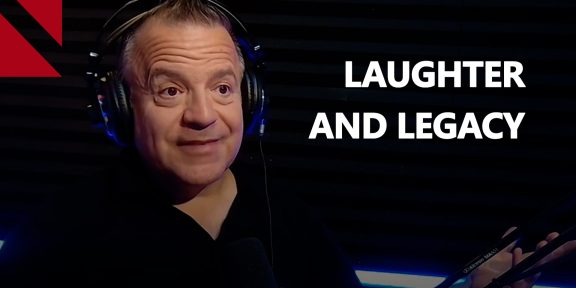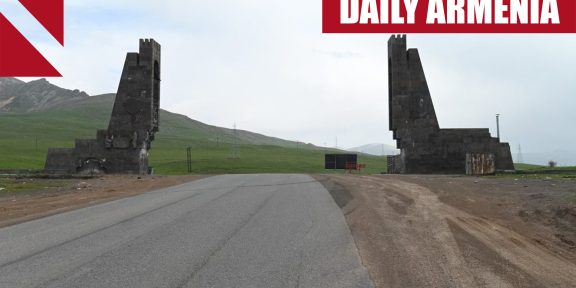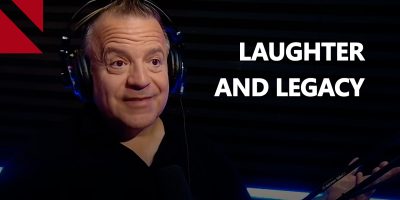 Karabakh war veteran Mkrtich Tonoyan (top left) in 1991. Photo taken in Nagorno Karabakh.
Karabakh war veteran Mkrtich Tonoyan (top left) in 1991. Photo taken in Nagorno Karabakh.
For Armenians it is a promised land. For Azerbaijanis it is a lost land. For these men it is a battlefield. This is the place where they spent a significant part of their youth. This is the place where they lost their friends, saw horrors of war and often were forced to kill. How do the Armenian veterans of the Nagorno-Karabakh War live nowadays?
Harmik
Harmik Hovsepyan, the first of our heroes, was born in an Armenian family living in Iran. He attended Armenian schools from the age of six. He gained his first military experience during his service in the Iranian army. As the only adult son of his parents, his military duty was not on the battlefront but in the rear. Being raised in the Armenian tradition, he became very interested in the state of affairs in Nagorno- Karabakh. He joined the Armenian Revolutionary Federation, which was illegal in Iran, and he started to make preparations to leave for Karabakh. Before leaving, he got married.
Although he told his friends he left for Germany to look for a better job, instead he travelled to his parents’ homeland. “Armenia is my home and I felt obliged to help it in need,” he said. His journey was complicated. On September 1, 1990, Harmik Hovsepyan arrived in Yerevan for the first time ever. “I felt I could fly. Being 25, I entered my ancestors’ cradle for the first time,” he reminisced.
Because of his experience in the Iranian army, he became an instructor for new recruits. “My lads learned quickly. They had to. If they didn’t get basic military habits soon, they wouldn’t survive even a day. That’s why we strived to place rookies with the more experienced soldiers, so the rookies could learn the art of war from them,” Harmik said.
The first time Harmik saw action on the battlefield was in January 1991, when he damaged an Azerbaijani helicopter using a heavy machine gun. A year later, he was promoted to captain and he became chief of company. He confesses that besides other things, his martial arts mastery (black belt, 3rd dan in Taekwondo) helped him to survive: “I didn’t use my abilities in close combat but in concentration, which is extremely essential in fighting. You know where the missile hits, where you hide. Thanks to that I survived and I wasn’t injured even once,” he said in his spacious apartment in Yerevan
After several months, Harmik, who was originally a goldsmith, returned to Iran where he occupied himself with his trade. After eleven months when the fighting became more intense, he returned to Nagorno-Karabakh and was directly assigned to a military unit. The unit was deployed in one of the toughest battles of the war. The soldiers of the unit even breached an Azerbaijani encirclement three times, although they suffered heavy casualties. Harmik’s regiment lost 55 men during battles in Martakert province.
Mr. Hovsepyan also recalled an encounter with the mujahideen, who were fighting alongside the Azerbaijanis: “In March 1994, I was summoned to interrogate a wounded mujahid. Since I was born and grew up in Iran, I speak Farsi, which is very similar to the Dari language which is used in Afghanistan. The wounded Afghani described that recruiters in Iran lured him with the promise of a high pay – 300 USD per month. But he hadn’t received anything until then. That’s why we captured him and sent him back home to Afghanistan after few months.”
Harmik himself confessed that he, too, had to kill: “It is you or him in the war. During the battles, I concentrated only to fulfil my task, to hit the target. I have killed many of them. But after the mission, I realized that the dead one also had a mother, fiancée, children… That’s just war.”
Nowadays, Harmik does not feel hatred towards Azerbaijanis. “When I was living in Iran, many of my friends were Azerbaijani. I was defending my country in the war but I feel no hatred. I could meet them but I believe they wouldn’t be interested because they were defeated,” he explained.
He remembers the war as being not a very happy, but significant and inseparable part of his life.
“I was getting used to common civilian life for about two years. When I returned to Yerevan, the people lived their very usual lives. They went to theatres, dated, enjoyed themselves. But at the same time, my friends were dying, people were losing their homes only few dozens of kilometres away in Nagorno-Karabakh. I wasn’t able to get used to that difference. But my wife helped me a lot. She was a support during those hard times.”
Eventually, Harmik was able to rid himself of the horrible memories of war. Unlike many of his colleagues, this holder of the highest Nagorno-Karabakh decorations lives happily. He and his wife raise two daughters and he manages a small martial arts school in Yerevan.
Harmik feels the greatest satisfaction when he travels to Nagorno-Karabakh and the local inhabitants show him gratitude and respect for his military merit: “That’s more than a pay for me. Now I know that I have contributed to the life. This knowledge is priceless,” the veteran summed up.
Igor
Igor Sargsyan grew up near the legendary lake Sevan. Being an outstanding student, he was accepted to Moscow State Technical University. He graduated in geophysics. Like many other young Soviet men, he had to fulfil his compulsory military service after he finished his studies. “I was placed in Saratov and Leningrad (now St. Petersburg). I learned to operate almost all infantry weapons which were available in those days. I used these many times during battles is Nagorno-Karabakh and actually that’s why I have survived,” Igor explained.
Thanks to rich oil deposits, the Azerbaijan government was able to generously fund its army, buy weapons from Turkey, hire pilots from Russia and Ukraine etc. However, Azerbaijan lost and Nagorno-Karabakh came under the full control of the Armenian side. Igor thinks that this disproportion is caused by the different composition of the armies: “The Azerbaijanis fought to receive a soldier’s pay, but we were volunteers, idealists. We fought for an idea, it was about our homeland, the cradle of our ancestors, who lived there for thousands of years. We also realized that if we had lost Nagorno-Karabakh, it would have been the beginning of the end. The end of Armenia as we know it. These ideas forced us not to retreat but to fight with the best possible effort,” Igor said and added. “The Armenian soldier felt the spirit of the war and the idea of a meaningful battle is sometimes more effective than the most advanced military technologies.”
Infantry lieutenant Igor experienced many tough battles mainly near Martakert. The fortunes of the war switched sides in this area. In 1991, the Azerbaijanis took the town and half of the province because of their technological superiority. But the Armenian army seized Martakert some time after. The toughest encounters were just in this area. Igor says that furious battles were fought in this mountainous area. He had to use his weapon many times. Nevertheless, he definitely denies that the army was deployed against Azerbaijan civilians: “I was there to fight for my country, to fight against invaders and enemy soldiers. I prohibited my men to kill civilians as well as wounded and captured enemies. We exchanged them with the Azerbaijanis. We are not barbarians. On the other hand, when some units saw what the Azerbaijanis were capable of, they decided not to take prisoners.”
Igor spent several years in Nagorno-Karabakh. Even though he was not wounded, the war took its toll: “I have serious diabetes. The doctor said that it might have been a consequence of fighting stress. In comparison with my friends, who never returned from Nagorno-Karabakh or suffered amputations, I have turned out well.”
Mr. Sargsyan and his family live in Yerevan and he works in the Nature Protection Department of the Ministry of Environment
Mkrtich
Our last and youngest hero became involved in the Nagorno-Karabakh conflict when he was only seventeen years old. In April 1991, this promising high school art student decided to leave his hometown of Yerevan and without his parents’ consent, joined a paramilitary unit.
He exchanged his brushes and canvas for a machine gun and ammunition packs.
Mkrtich Tonoyan was assigned to a unit of young volunteers. “We were all about 16 or 17 years old, we virtually hadn’t seen guns until that time. There were girls among us as well but their tasks were usually in the rear,” Mkrtich said. He told his parents he was attending DOSAAF, a Soviet paramilitary educational institution. However, he travelled to the Azerbaijan border where he learned basic military techniques for more than six months. The instructors were mostly Armenian veterans of the Afghanistan war.
The unit was involved in the battle near Shushi and Stepanakert only a half year later. “Although we were virtually children, we fulfilled many different tasks. Besides other things, we performed many reconnaissance missions, shooting was almost ceaseless. I remember days when they were firing almost everything at us. Rocket launchers, cannons, tanks, mortars, aircraft, there was no place to hide. These memories are the worst,” Mkrtich explained.
Mkrtich also remembers encounters with the dreaded mujahideen fighting with Azerbaijanis: “They often came from Afghanistan and they were literally fanatics. They always fought to the last shot and when they were out of ammunition, they detonated a grenade in their hands.”
 Drawings by Mkrtich Tonoyan of his fellow comrades during the Karabakh War.
Drawings by Mkrtich Tonoyan of his fellow comrades during the Karabakh War.
Unlike Harmik and Igor, Mkrtich was seriously wounded. At the very end of the war in 1994, his military vehicle UAZ carrying eight soldiers drove over a mine. Three of his comrades died, some others suffered amputations. Mkrtich suffered head and spinal wounds. He spent almost a month in hospital. The war was over for him. “Sometimes, I have headaches, backaches, migraines and I was deemed invalid in the third degree. But I never complain. It could have turned out much worse. One of my best friends wanted to be a film director, he was very gifted, but he never returned from there.”
He was reunited with his father (who was also fighting in the battles) after the war and returned to school. He has a clear answer on how he was affected by the war as a young man: “I believe I became a better and more spiritual man. When our car was blown up, I might not have returned from there. Well, I have returned. I believe it was a divine intervention. A miracle. An impulse to stay in this world and create something.”
Mr. Tonoyan finished his high school studies in a shortened period. Then he studied at the Academy of Art and has become a well known artist. He says he tries “to show present world aesthetics seen from the military perspective and to point out that the world is controlled by force.”
Mkrtich adds that his aim is to incessantly look for the New Humanistic Utopia, the world where love and creativity prosper despite experienced horrors.
Mkrtich Tonoyan and his wife today live in Yerevan and they are raising three daughters. They are expecting their fourth child soon.
All three veterans come from various backgrounds, their war experiences are often different and their current life is different from each other. However, when they were asked to express their greatest wish at the end of the interview, only one word was spoken three times: peace.
Martin Ocknecht



















